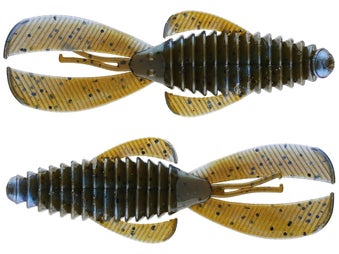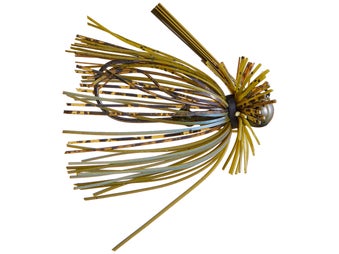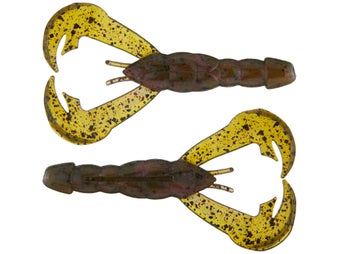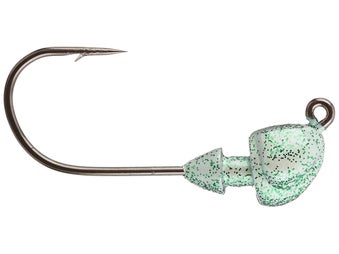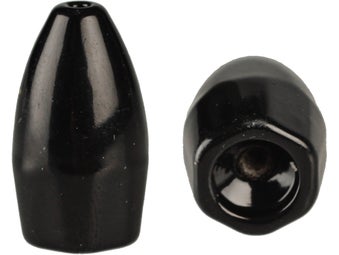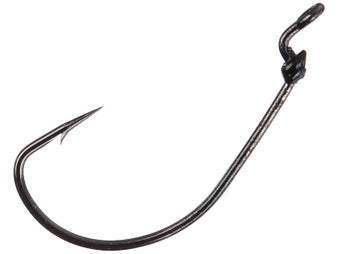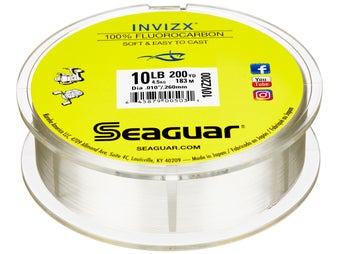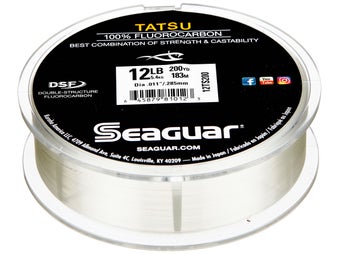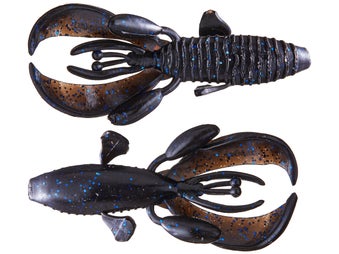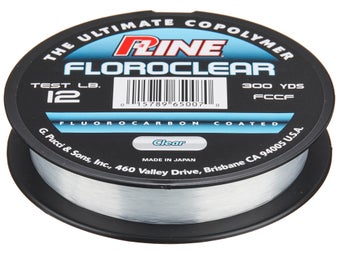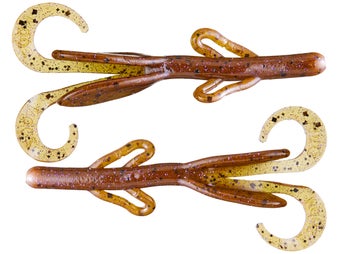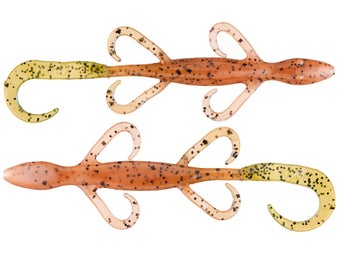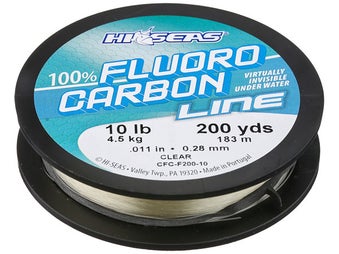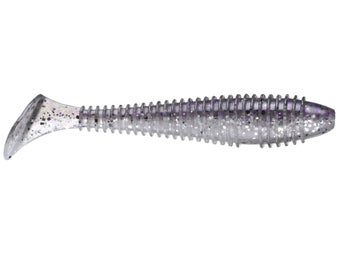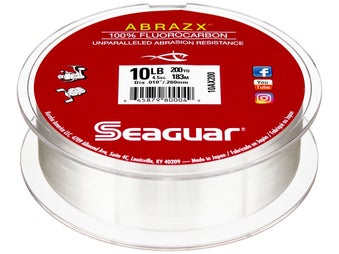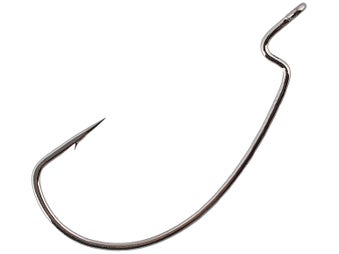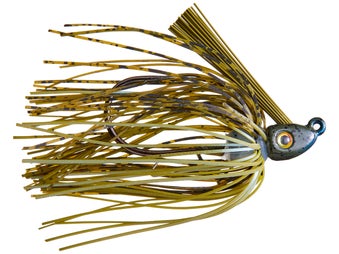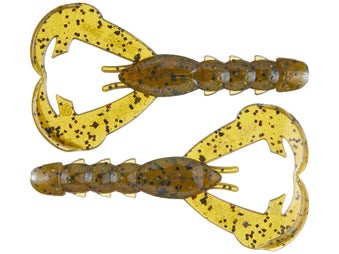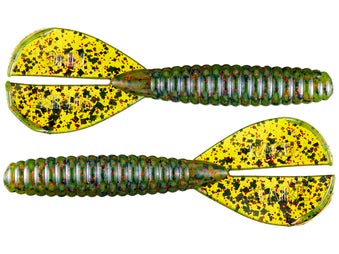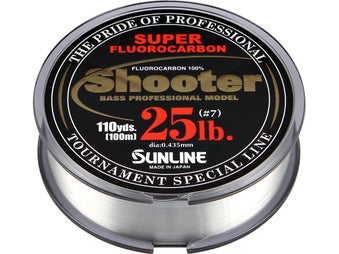Mark Rose Wins FLW Lake Travis
Mark Rose's Winning Pattern, Baits & Gear
Last week at Lake Travis, it was a classic Rose scenario - deep water, offshore structure fishing. He used his electronics to identify some timber near the end of the Mansfield Dam Park boat ramp, an area he'd remembered from the last time the FLW Tour visited Travis in 2007. He didn't practice there or check the spot until day 2 of the tournament as he'd been fishing another spot close by. "It was 40 feet lower (in '07)," he said. "I remember the end of the ramp - it was a big a mound with loose rock." Now with the lake filled up, that rock and wood created the perfect offshore situation for Rose as the bass suspended in and around the trees. It produced four big fish for him over the final three days, critical catches that fueled his history-making victory that saw him outdistance Bryan Thrift by less than a pound for the second time in three weeks. "I've been on hot streaks before, but never two wins in a row," he said. Rose complemented his deep-water patterns with a dock-flipping program on the weekend that helped augment the big fish he'd catch in the morning. "It was a deep-shallow combo," he said. As hot as Thrift has been over the past 9 months, Rose is in the midst of a stretch that includes six straight top-25 finishes dating back to Pickwick Lake last summer. He has top-6 finishes in four of the last five Tour events.
With cloudy and windy conditions greeting the field for the start of practice, Rose initially dialed in a shallow crankbait bite in the Colorado River and figured he'd ride that as long as the conditions would allow come tournament time. He focused mostly on bluffs walls and associated structure and also developed a pattern with a Strike King Denny Brauer Baby Structure jig. "I felt really good about that," he said. "I'd crank when the wind blew and I really felt like on those chunk rock banks and bluffs, I was prepared for any conditions. I felt like the jig would work under sunny and slick conditions and the crank would work with wind and clouds, but those fish packed up and left on me." He also had identified three areas down lake that he'd classify as deeper, offshore spots. Those came in handy as there were not the numbers of fish shallow as he'd expected there to be. "We were given the perfect recipe for shallower staging fish," he said. "I was expecting to see them on channel swings and deeper bushes in 6 to 8 feet of water and out in the mouths of pockets. I wasn't expecting the fish to be as deep as what they were. I'm thankful I idled around in practice and found some deep fish because those places wound up producing a good many fish for me."
Competition:
Rose started the tournament up the Colorado with a shallow-running crankbait and the jig. He caught three small keepers, but sensed the whole game plan was going south with the sunny, sick conditions. He came back down lake where he caught a 4-pounder off one of his deep spots that anchored his 11-09 bag on day 1. "About noon, after trying to make it work all morning, I left with those little fish and I knew I was in trouble if I didn't put something together," he said. "It was my instinct to trust my gut and run away from it. "I stopped on a deep place I'd found in practice and caught that 4 on my first throw. That told me I needed to regroup and what I needed to do for the rest of the tournament." He was 41st after the first day, more than 13 pounds behind Thrift, who'd caught a tournament-best 24-12. He stuck with his deep-water program on day 2 and turned in his best bag of the event, a 17-03 stringer that propelled him up to 5th. While probing a stair-step ledge on a deep point near the Mansfield Dam on Friday - it was where he'd caught his 4-pounder on day 1 - Rose recalled the 2007 FLW Tour event at Travis when he caught some of his fish off the end of a nearby boat ramp. The water was 40 feet lower back then, but when he idled over it Friday, there were fish holding around some trees that had grown up near where the ramp ended, now in 50-plus feet of water.
"I go over there and catch one," Rose said. "I remembered catching fish there in 2007 and I said, ‘Before I leave here, I'm just going to throw on it.' The wind was blowing on it and I wanted to try it. That's when I found there was a fish or two on it." He wound up catching two keepers there with a football jig, but the spot ultimately swung the outcome of the tournament in his favor. He didn't start day 3 on the boat ramp, but it wasn't long before he made a cast there and the first fish he caught there was a 6-pounder that anchored a 15-13 stringer that pushed him up to 2nd entering the final day. "I saw some arches deep around those trees and I sat down in my boat and tied on a swimbait immediately before making a cast," he said. "I fired it out there and caught that one almost immediately." He said there were a couple trees near the end of the ramp a couple more off to the side. The key was making repeated casts from a distance since a vertical presentation didn't yield any bites. For the fish hugging the end of the ramp, he offered up a big football jig while a swimbait was effective in catching the suspended fish.
On Saturday, he realized the deep-water bite tapered off late in the morning. With the sun still high in the sky for a third straight day, he ran a series of docks, hoping to intercept some fish that moved in. He caught two key upgrades Saturday afternoon, including a 3 1/2-pounder, flipping a Strike King Rage Bug arounds docks. "The docks were shallower to mid range," he noted. "When the sun got out it's time for those fish to start cruising. This is the time of year they're in cruise mode. Putting that dock thing together was a big deal." He employed the deep-shallow combination again on Sunday when he trailed by Thrift by 1 pound to start the day. He caught two big ones near the boat ramp and wound up leaving the area shortly after 11 a.m. with four keepers. He made a modest run up the lake and spent the rest of his day targeting docks. He finished his limit just after 12:30 and caught two more key upgrades in the afternoon to vault past Thrift. "I believe some of them were pre-spawn and some were post-spawn," he added. "I caught a few that were long and skinny, but most of them were fat and healthy."
Winning Gear:
Swimbait gear: 7'6" heavy-action Lew's Custom Pro Speed Stick Ledge Series swimbait casting rod, Team Lew's Magnesium Speed Spool casting reel (7.5:1 ratio), 17-pound Seaguar InvizX fluorocarbon line, 1-oz. Strike King Squadron swimbait head, 6" unnamed paddletail swimbait (shad).
Jig gear: 7'2" heavy-action Lew's Custom Pro Speed Stick Ledge Series jig/worm casting, same reel, 15-pound Seaguar Tatsu fluorocarbon line, 3/4- and 1-oz. Strike King Tour Grade football jig (green-pumpkin), Strike King Rage Tail Craw trailer (green-pumpkin). When it was windy and he was fishing deeper than 30 feet, he opted for the heavier jig. He used the 3/4 in less than 30 feet.
Skipping/Pitching gear: Same rod as jig, same reel, same line as swimbait (20-pound), 5/16-oz. Strike King Tour Grade tungsten worm weight, 4/0 Mustad Wide Gap KVD Grip Pin worm hook, Strike King Rage Tail Rage Bug (blue craw).
Main factor: "Probably trusting my instincts and not having a one-track mind, like knowing when to go shallow. The deep-water bite died after lunch and I had to just leave it. That's where best quality was, but I had to leave it and put together what I could with my kickers."
Performance edge: "I couldn't have won this week without my Garmin units. To be able to see (those trees) so clear so deep was huge. Those fish were in 52 feet of water suspended around a tree about 5 feet off the bottom. I could see those fish in that tree and suspended around it."
FLW Tour Lake Travis Winning Pattern BassFan 2/21/17 (Todd Ceisner)
Bryan Thrift's Pattern, Baits & Gear
On the weekend, Thrift shifted to junk-fishing mode as he sorted through countless small fish. He figured with the sunny conditions, he could follow some fish that had moved shallow. He continued to revisit the area the produced his big bag, but he also incorporated docks and by day 4, he was throwing a buzzbait in an effort to entice another big bite. "The buzzbait lied to me (Sunday)," he quipped. "It was hot and muggy and in the first five minutes, I caught a couple decent keepers on it. I threw it for the next three hours and never got another bite." He spent most of the tournament between the split in the rivers and Jonestown. He never spent any time toward the dam, where Rose found his big-fish spot. This was the second top-3 finish for Thrift at Travis. He was 3rd in 2007. "I'm getting better," he joked.
Shaky-head gear: 6'10 medium-heavy Fitzgerald Fishing Versa Series spinning rod, unnamed spinning reel, 15-pound P-Line TCBX braided line, 8-pound P-Line fluorocarbon (leader), 3/16-oz. unnamed shaky-head jig, 6.5" Damiki Finesse Miki (watermelon candy).
Jig gear: 6'9" heavy-action Fitzgerald Fishing Bryan Thrift Signature Series skipping rod, unnamed casting reel, 20-pound P-Line fluorocarbon line, 1/2-oz. unnamed jig (brown), unnamed chunk trailer (brown).
Main factor - "That Finesse Miki was critical to start because without that 24-pound bag on day 1, I don't make a check here."
Performance edge - "My skipping rod and that P-Line fluorocarbon were key when fishing those fish around the dock cables and stuff."
FLW Tour Lake Travis 2-5 Winning Patterns BassFan 2/21/17 (Todd Ceisner)
Dylan Hays' Pattern, Baits & Gear
He ran to the area up the river with the willows and camped there on days 1 and 2, sharing the area with Brad Knight. He flipped bushes and trees in 3 to 6 feet of water on a sprawling flat and tallied more than 28 pounds at the halfway points. On day 2, he stopped on one of those points down the river that had some trees on it. His co-angler had a field day on it, catching 12 pounds, which prompted Hays to ask him to stop casting on it so as to preserve it for the next day if Hays qualified for the weekend. "One of those points was a key spot during the tournament," Hays said. "I had no idea how good it was. I weighed nearly all of my day-3 and 4 fish off that point. It was just a main river point, somewhere they'd stop before they'd go back into the bay to spawn. There were trees all over it." The key presentation there was a 6-inch lizard Texas-rigged behind a 1/4-ounce worm weight. "We just let it float down into the trees," he said. "I guess they were down in those trees eating shad. We kept making the same cast over and over again." On Sunday, that same point produced a limit in the matter of an hour and an upgrade later in the day as he moved up one spot on the final day.
Flipping gear: 7'3" heavy-action Falcon Rods Cara T7 casting rod, Lew's BB1 Pro Speed Spool casting reel, 20-pound Hi-Seas fluorocarbon line, 1/4-oz. unnamed worm weight, 4/0 Mustad KVD Straight Shank Grip-Pin worm hook, Zoom Super Hog (watermelon candy).
Lizard gear: Same rod, same reel, same line, same weight, same hook, 6" Zoom Lizard (pumpkin chartreuse).
A Zoom Brush Hog and Speed Worm also caught fish for Hays on day 4.
Main factor - "Getting quality bites early in practice. That's always important. I had all practice to expand on it. At Guntersville, I didn't get any quality bites until the last two hours of practice and I couldn't expand on it. That area of the river where I was at is real fertile and there were a lot of big fish up there, plus it got a lot less pressure."
Performance edge - "My Costa glasses were really important. I wore the Sunrise lens and in the early morning making those long runs made it really bright. On day 1, I ran 40 miles in the fog without an issue."
FLW Tour Lake Travis 2-5 Winning Patterns BassFan 2/21/17 (Todd Ceisner)
Clark Reehm's Pattern, Baits & Gear
Spinnerbait gear: 7'3" medium-heavy Dobyns Champion XP casting rod, Daiwa Tatula casting reel, 17-pound Seaguar AbrazX fluorocarbon line, 3/4-oz. War Eagle Gold double-willow spinnerbait (spot remover).
Swimbait gear: 7'3" heavy-action Dobyns Champion XP casting rod, same reel, same line (15-pound), 1/2-oz. Revenge Swimbait Hedz, 4.8" Keitech Swing Impact Fat (chartreuse shad).
Carolina rig gear: 7'8" heavy-action Dobyns Champion Extreme casting rod, Shimano Curado casting reel, same line (20-pound), 1/2-oz. Elite Tungsten worm weight, 5/0 Gamakatsu EWG worm hook, Zoom Super Fluke (watermelon).
Reehm dipped the tail of the fluke in chartreuse dye to match the perch that inhabit Travis' waters. "It's a classic Texas pattern," he added.
He went with a lighter weight on the Carolina rig so the bait would come the bushes easier.
Main factor - "I do a lot of prep work for tournaments and I utilizing everything I can, including Google Earth and aerial photographs. Every night I'd look at pictures for an hour or two and was able to make 200 waypoints from the isolated bushes I could. Being able to figure it out and spend time preparing like that for the event was huge."
Performance edge - "The Hydrowave was key because when I used that, I could see those fish get more active."
FLW Tour Lake Travis 2-5 Winning Patterns BassFan 2/21/17 (Todd Ceisner)
Clark Wendlandt's Pattern, Baits & Gear
Jig gear: 7'6" heavy-action Cabela's XML flipping stick, Cabela's Arachnid casting reel, 20-pound Sunline Shooter fluorocarbon line, 1/2-oz. Strike King Hack Attack Heavy Cover jig (green-pumpkin), Strike King Rage Tail Baby Rage Craw trailer (green-pumpkin), 3/4-oz. Strike King Tour Grade football jig (green-pumpkin), same trailer.
When he was in 20 feet or more, Wendlandt opted for the 3/4-oz. football jig. When he was inside of 20 feet, he went with the Hack Attack jig.
His flipping set up was the same as his jig tackle, but he flipped a green-pumpkin Strike King Rage Tail Menace.
He also mixed in a Strike King Rage Tail Hawg on a Carolina rig to give the jig fish a more subtle presentation.
Main factor - "Having fished there my whole life. It's not like it's the same lake, but it still is. It's just different now that it's full. I understand what the bass do there. I like fishing there."
Performance edge - "My Garmin electronics were a huge key. Just my familiarity with them, a lot of times I could see the fish I ended up catching. I ran a four-bank screen with mapping, traditional sonar, DownVu and SideVu. I could keep up with what the fish were doing pretty easily."
FLW Tour Lake Travis 2-5 Winning Patterns BassFan 2/21/17 (Todd Ceisner)
